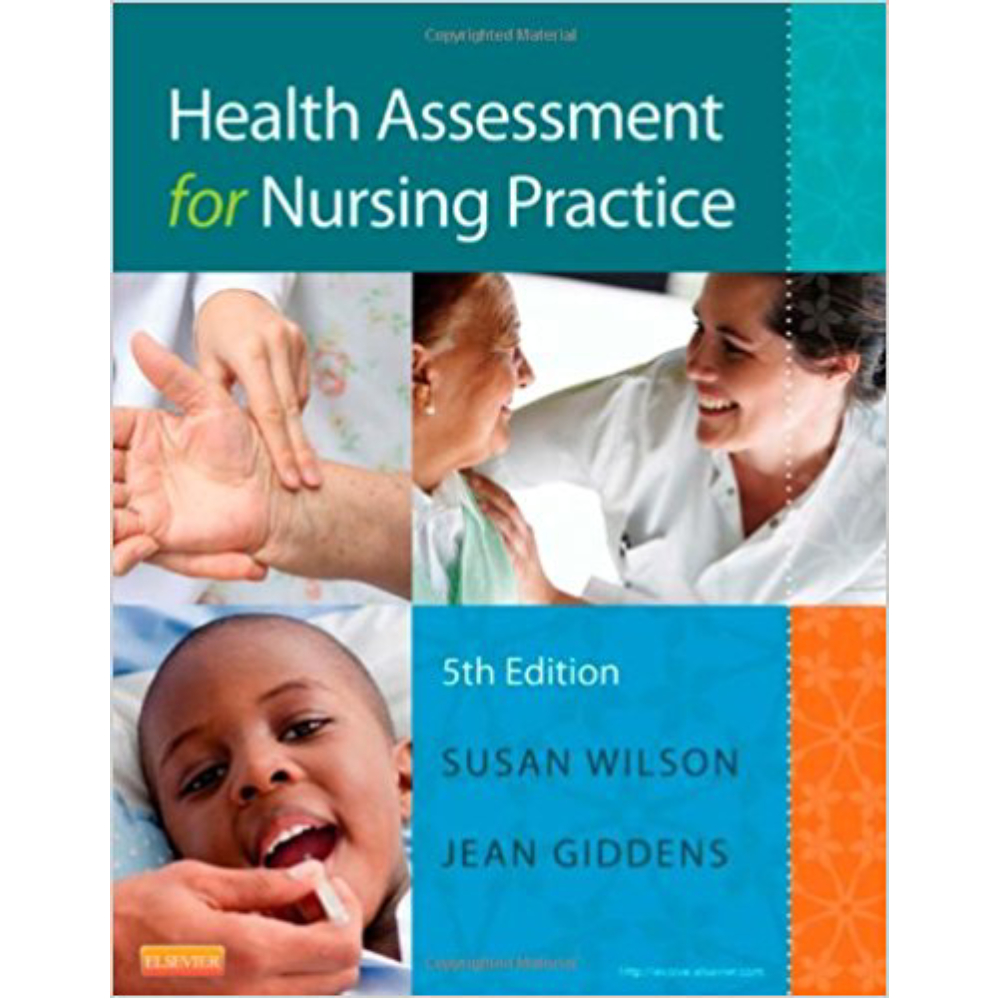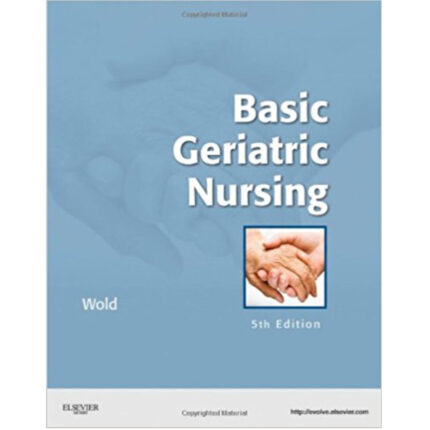Health Assessment For Nursing Practice 5th Edition by Wilson – Test Bank
Chapter 11: Lungs and Respiratory System
Test Bank
MULTIPLE CHOICE
1. A patient tells the nurse that she has smoked two packs of cigarettes a day for 20 years. The nurse records this as how many pack-years?
a. 10
b. 20
c. 40
d. 60
ANS: C
Feedback
A This incorrect calculation was made by dividing 20 years by 2 packs.
B This is correct if the patient smoked 1 pack per day for 20 years.
C Two packs of cigarettes 20 years = 40 pack-years.
D This is correct if the patient smoked 3 packs per day for 20 years or 2 packs a day for 30 years.
DIF: Cognitive Level: Apply REF: 197, Box 11-1
TOP: Nursing Process: Assessment
MSC: NCLEX Patient Needs: Physiologic Integrity: Reduction of Risk Potential: System Specific Assessments
2. After taking a brief health history, a nurse needs to complete a focused assessment on which patient?
a. A male who works as a painter
b. A male who plays basketball and hockey
c. A female who recently moved into a college dormitory
d. A female who has a history of gout
ANS: A
Feedback
A The fumes and chemicals from the paint may expose the patient to respiratory irritants. A baseline pulmonary assessment needs to be documented.
B This patient is not at risk for pulmonary disease.
C This patient is not at risk for pulmonary disease.
D This patient is not at risk for pulmonary disease.
DIF: Cognitive Level: Apply REF: 198
TOP: Nursing Process: Assessment
MSC: NCLEX Patient Needs: Health Promotion and Maintenance: Health Screening
3. During a symptom analysis, a patient describes his productive cough and states his sputum is thick and yellow. Based on these data, the nurse suspects which factor as the cause of these symptoms?
a. Virus
b. Allergy
c. Fungus
d. Bacteria
ANS: D
Feedback
A A virus usually produces a nonproductive cough.
B An allergy usually produces clear sputum.
C A fungus usually produces few symptoms. The sputum used to diagnose the fungus is obtained from tracheal aspiration rather than the patient coughing up the sputum.
D Bacteria usually produce sputum that is yellow or green in color.
DIF: Cognitive Level: Apply REF: 198
TOP: Nursing Process: Assessment
MSC: NCLEX Patient Needs: Physiologic Integrity: Physiologic Adaptation: Alterations in Body Systems
4. During the problem-based history, a patient reports coughing up sputum when lying on the right side, but not when lying on the back or left side. The nurse suspects this patient may have a lung abscess. What additional question does the nurse ask to gather more data?
a. “Does the sputum have an odor?”
b. “Do you have chest pain when you take a deep breath?”
c. “Have you also experienced tightness in your chest?”
d. “Have you coughed up any blood?”
ANS: A
Feedback
A Sputum with odor and sputum production with change of position is associated with lung abscess or bronchiectasis.
B Chest pain on deep breathing is associated with pleural lining irritation.
C Tightness in the chest is associated with asthma.
D Coughing up rust-colored sputum is associated with pneumonia, but coughing up blood may be associated with lung cancer.
DIF: Cognitive Level: Apply REF: 198
TOP: Nursing Process: Assessment
MSC: NCLEX Patient Needs: Physiologic Integrity: Physiologic Adaptation: Alterations in Body Systems
5. Which question will give the nurse additional information about the nature of a patient’s dyspnea?
a. “How often do you see the physician?”
b. “How has this condition affected your day-to-day activities?”
c. “Do you have a cough that occurs with the dyspnea?”
d. “Does your heart rate increase when you are short of breath?”
ANS: B
Feedback
A This question does not relate specifically to the patient’s dyspnea.
B This question provides data about the severity of the dyspnea and what actions the patient has taken to cope with the dyspnea on a daily basis.
C This question provides data, but does not give additional facts about the patient’s dyspnea.
D This is a closed-ended question that does not collect additional data about this episode of dyspnea.
DIF: Cognitive Level: Apply REF: 199
TOP: Nursing Process: Assessment
MSC: NCLEX Patient Needs: Physiologic Integrity: Physiologic Adaptation: Alterations in Body Systems
6. A patient complains of shortness of breath and having to sleep on three pillows to breathe comfortably at night. During the nurse’s examination, what findings will suggest that the cause of this patient’s dyspnea is due to heart disease rather than respiratory disease?
a. Increased anteroposterior diameter
b. Clubbing of the fingers
c. Bilateral peripheral edema
d. Increased tactile fremitus
ANS: C
Feedback
A This is seen with lung hyperinflation and may be associated with emphysema.
B This is associated with chronic hypoxia and may be associated with cystic fibrosis or chronic obstructive pulmonary disease.
C This indicates heart failure; dyspnea occurs because the heart cannot adequately perfuse the lungs.
D This occurs when vibrations are enhanced and is associated with consolidation that may occur in pneumonia or tumor.
DIF: Cognitive Level: Analyze REF: 199
TOP: Nursing Process: Assessment
MSC: NCLEX Patient Needs: Physiologic Integrity: Physiologic Adaptation: Alterations in Body Systems
7. During a history, a nurse notices a patient is short of breath, is using pursed-lip breathing, and maintains a tripod position. Based on these data, what abnormal finding should the nurse expect to find during the examination?
a. Increased tactile fremitus
b. Inspiratory and expiratory wheezing
c. Tracheal deviation
d. An increased anteroposterior diameter
ANS: D
Feedback
A Increased tactile fremitus occurs when vibrations are enhanced and is associated with consolidation that may occur in pneumonia or tumor.
B Inspiratory and expiratory wheezing is associated with asthma.
C Tracheal deviation is associated with tension pneumothorax.
D An increased anteroposterior diameter is consistent with emphysema.
DIF: Cognitive Level: Analyze REF: 199| 207
TOP: Nursing Process: Assessment
MSC: NCLEX Patient Needs: Physiologic Integrity: Physiologic Adaptation: Alterations in Body Systems
8. A nurse notices a patient’s chest wall moving in during inspiration and out during expiration. What additional assessment must the nurse perform immediately?
a. Palpate for tracheal deviation.
b. Auscultate for bronchovesicular breath sounds in the lung periphery.
c. Palpate posterior thoracic muscles for tenderness.
d. Auscultate for absence of breath sounds in the lung periphery.
ANS: A
Feedback
A Chest wall moving in during inspiration and out during expiration is paradoxical chest wall movement. It can be caused by a tension pneumothorax, which increases intrathoracic pressure in the thorax, causing tracheal deviation and indicating mediastinal shift.
B Tension pneumothorax does not create bronchovesicular breath sounds in the lung periphery.
C This is performed when the patient has air in the subcutaneous tissue or pleural friction rub.
D Absent breath sounds may be found in pneumothorax, but if the patient has a tension pneumothorax, tracheal deviation is a more important sign.
DIF: Cognitive Level: Apply REF: 199| 213-214| 220
TOP: Nursing Process: Assessment
MSC: NCLEX Patient Needs: Physiologic Integrity: Physiologic Adaptation: Alterations in Body Systems
9. A nurse inspects a patient’s hands and notices clubbing of the fingers. The nurse correlates this finding with what condition?
a. Pulmonary infection
b. Trauma to the thorax
c. Chronic hypoxemia
d. Allergic reaction
ANS: C
Feedback
A Pulmonary infection is acute and not associated with chronic hypoxia.
B Trauma to the thorax is acute and not associated with chronic hypoxia.
C Clubbing develops due to chronic hypoxemia, which occurs in chronic obstructive pulmonary disease.
D Allergic reaction is acute and not associated with chronic hypoxia.
DIF: Cognitive Level: Apply REF: 202
TOP: Nursing Process: Assessment
MSC: NCLEX Patient Needs: Physiologic Integrity: Physiologic Adaptation: Alterations in Body Systems
10. A nurse is assessing a patient who was diagnosed with emphysema and chronic bronchitis 5 years ago. During the assessment of this patient’s integumentary system, what finding should the nurse correlate to this respiratory disease?
a. Dry, flaky skin
b. Clubbing of the fingers
c. Hypertrophy of the nails
d. Hair loss from the scalp
ANS: B
Feedback
A Dry, flaky skin occurs with dehydration.
B Clubbing of the fingers develops due to chronic hypoxemia, which occurs in chronic obstructive pulmonary disease.
C Hypertrophy of the nails occurs with repeated trauma.
D Hair loss from the scalp is alopecia, which occurs with many systemic diseases, but not chronic pulmonary disease.
DIF: Cognitive Level: Apply REF: 202
TOP: Nursing Process: Assessment
MSC: NCLEX Patient Needs: Physiologic Integrity: Physiologic Adaptation: Alterations in Body Systems













Reviews
There are no reviews yet.